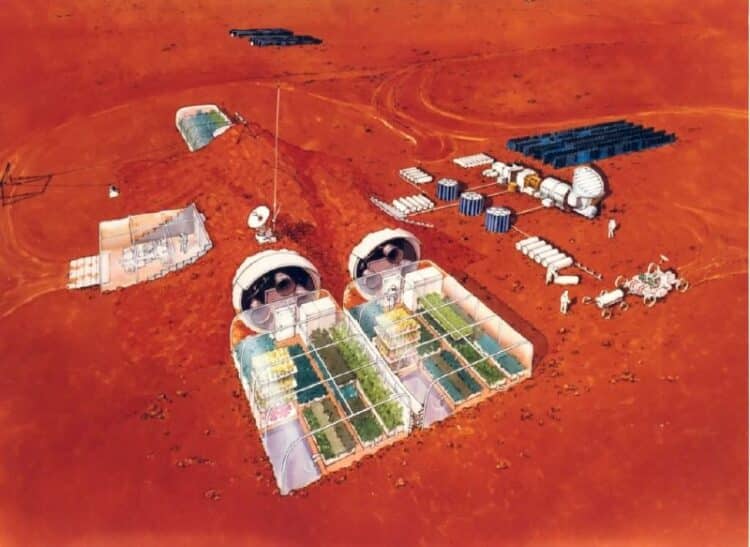British scientist proposes building reserves of terrestrial life on Mars


The concept of a future Martian colony includes greenhouses for growing plants.
British scientist proposes building reserves of terrestrial life on Mars
Hundreds of species go extinct every year, and one way to save them is to give endangered plants and animals a new home on the Red Planet. Only there will they be able to avoid the pressure of the growing population of the Earth.
The Earth’s population has reached eight billion, and in the next century the figure may exceed 11 billion.
To house so many people, many areas that are now a refuge for wild animals and plants will have to be sacrificed, and this will inevitably lead to a colossal extinction of species.
One way to preserve biodiversity is to provide our planetary neighbors with another place to live, perhaps in special reserves on Mars.
Paul Lister Smith of the University of Bristol (United Kingdom) proposed including the construction of this type of reserves in the concept of a future Martian colony: in addition to being useful for the conservation of terrestrial plant and animal species, they will help maintain the health psychology of the settlers.
Although the idea may seem absurd, it is not without justification. The length of a Martian day (sol) is not much different from that on Earth, and there is enough frozen water below the surface of dry Martian soil to solve the irrigation problem.
As for low temperatures, insufficient atmospheric pressure and strong ultraviolet radiation, all these problems are solved with the help of special “greenhouses” that will create a closed terrestrial-type ecosystem.
It is not entirely clear whether the weak magnetic field of Mars, other lunar cycles, and the lack of a complete change of seasons will affect terrestrial life forms, unless reserve designers can simulate a change in temperature and hours of light.

Also, the Red Planet receives half as much sunlight as Earth, so plants will grow more slowly, unless of course only shade-tolerant species are brought there.
Reserve designers will also have to deal with other issues, from soil fertility (combined with plants, microorganisms, fungi, and small animals working together) to Martian dust storms (which will reduce the amount of light reaching the surface of the earth) and reduced gravity. , which on Mars is only 38 percent of the earth.
In general, Smith emphasized, attempts to fully reproduce the terrestrial forest on Mars are unproductive.
However, if at least some of the terrestrial species adapt, they may become the basis of a new ecosystem that will transform the face of the Red Planet.
The creation of such an ecosystem may seem unethical, b
ecause many organisms will die, unable to adapt to the new conditions.
But, according to the scientist, the hope of survival of at least a few should already serve as a worthy justification for the construction of the first alien reserve.




